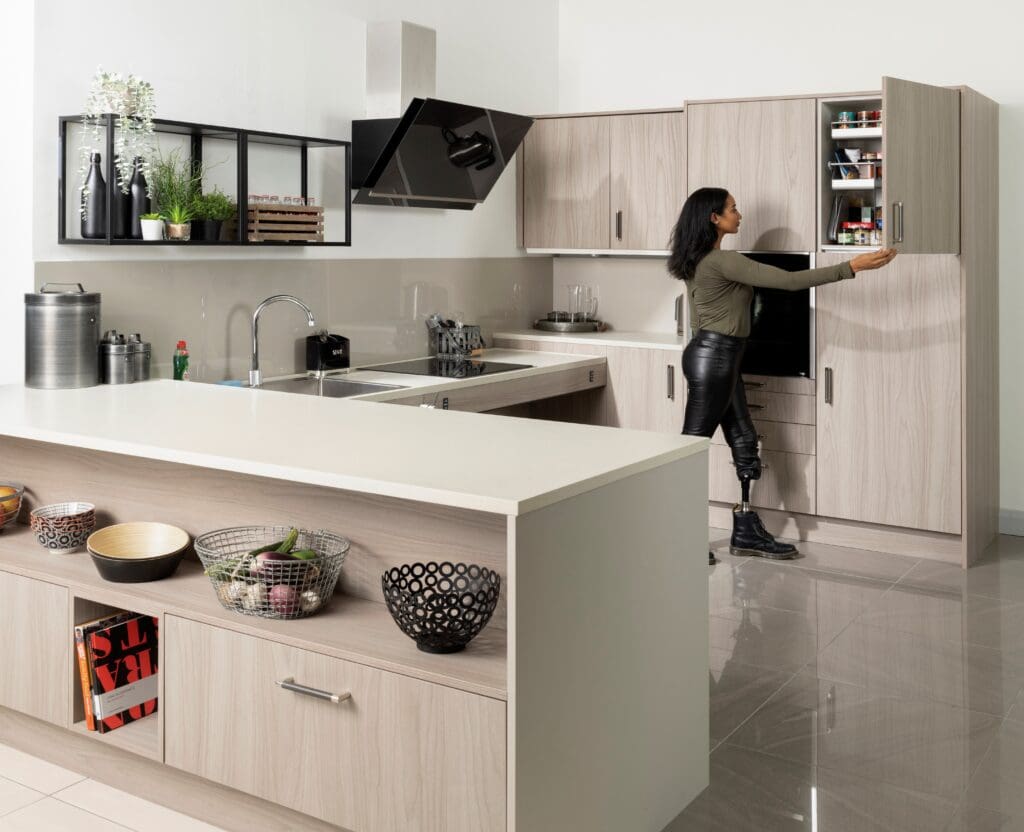
Belinda talks accessible and universal design
Belinda sat down recently to talk with freelance kitchen and bedroom designer Faye Newman on her Love Your Kitchen podcast. The podcast is available on video so you can take time out to get a cup of tea and have a watch here .
If you haven’t got time right now, here is a summary:
Good design is good design, whatever the capabilities of the client.
Asking the right questions, understanding how a client would work in a room and what their future needs are can all be discussed at the start of the design process.
A well-designed accessible kitchen does not have to look any less stylish than any other kitchen.
If a designer knows what products are available and how to get the best from them, they can offer appropriate solutions.
A rise and fall system can be incorporated, allowing heights to be adjusted and space underneath for wheelchair access. These can be operated manually or via remote control. Design details such as waterfall edges will enhance safety, containing any water spillage. The length of these sections can vary, and they can incorporate cooking and washing facilities.
Textures are important, with different textures helping to define areas within the kitchen.
Noise levels vary across brands and models of appliances. Appliances can be chosen to mitigate any hearing sensitivities. This can sometimes apply to pets in the home.
Voice activated appliances can assist by offering an alternative to knobs or dials that may not be suitable for everyone. Similarly, digitally controlled appliances can help, when the instructions and details can be viewed in an App or on an I-pad, with the facility to enlarge the copy.
The most modern appliances have clever features such as cameras in ovens, which enable the client to check on how food is cooking without opening the oven.
Checking guidelines such as turning circles of wheelchairs can ensure that design allows for free movement. Clients may visit the showroom in one wheelchair but use a different model at home. Visiting a client in the home can assist the designer in getting a full picture of the client’s lifestyle.
A well-designed kitchen can last many years so looking ahead to future proof the design at the outset can avoid costly changes later on.
Lighting can enhance a design with dedicated task lighting in key areas like the countertop, sink, and hob. Contrasting colours on switches and surfaces can aid navigation. Montion controlled lights can negate the need for switches and can be especially useful in cupboards. Correct contrast is crucial in enhancing a room for the visually impaired. Using colours that reflect light will help to differentiate an object from its surroundings.
At Qudaus we like to get everyone involved and work with our clients, starting with a wish list and highlighting any concerns or issues. We encourage our clients to be realists about budgets as there are always ways to do things differently and compromises to be discussed.
If you are considering an accessible kitchen, call in and see us, we are always happy to show you around the showroom.





